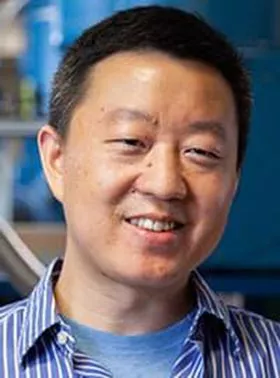The digital device you use to view this article undoubtedly uses bits, which can be 0 or 1 as its basic information unit. However, scientists around the world are competing to develop a new computer based on the use of quantum bits, or qubits. It can be 0 and 1 at the same time, and one day it can solve complex problems beyond any classical supercomputer.

A research team led by scientists from Argonne National Laboratory of the U.S. Department of energy (DOE) and Guo Wei, associate professor of mechanical engineering at FAMU-FSU School of engineering, announced the creation of a new quantum bit platform, which shows the great prospect of being developed into a future quantum computer. Their work is published in the journal Nature.
"Quantum computer may be a revolutionary tool for performing calculations that are almost impossible for classical computers, but there is still work to be done to make it a reality," said co-author Guo. "Through this research, we think we have made a breakthrough and made great progress in manufacturing quantum bits that help realize the potential of this technology."
The team created its qubits by freezing neon into a solid at a very low temperature, spraying electrons from the bulb onto the solid and capturing an electron there.

Wei Guo, associate professor of mechanical engineering at FAMU-FSU School of engineering source: Florida State University
Although there are many choices about the type of qubit, the team chose the simplest one - a single electron. Heating a simple filament, such as the one you find in children's toys, can easily emit infinite electrons.
For quantum bits, an important quality is that they can maintain the state of 0 or 1 at the same time for a long time, that is, the so-called "coherence time". This time is limited, and this limit is determined by the way the qubit interacts with its environment. The defects in the quantum bit system will greatly reduce the coherence time.
For this reason, the team chose to capture an electron on the surface of ultrapure solid neon in vacuum. Neon is one of the only six inert elements, meaning that it does not react with other elements.
"Due to this inertia, solid neon can be used as the cleanest solid in the vacuum to carry and protect any qubit from damage," said Jin Dafei, a gong scientist and the main researcher of the project
By using a chip level superconducting resonator - like a micro microwave oven - the team can manipulate trapped electrons to read and store information about qubits, so that they can be used in future quantum computers.
Previous studies used liquid helium as a medium to hold electrons. This material is easy to be free of defects, but the vibration of liquid free surface is easy to interfere with the electronic state, which affects the performance of qubits.
Solid neon provides a material with few defects and does not vibrate like liquid helium. After establishing their platform, the team used microwave photons to conduct real-time quantum bit operations on trapped electrons and described their quantum properties. These tests show that solid neon provides a powerful environment for electrons, and the electrical noise interfering with it is very low. Most importantly, the qubit achieves the coherent time competing with other most advanced qubits in the quantum state. The simplicity of the qubit platform should also help to bring about a simple and low-cost manufacturing process.
The prospect of quantum computing is that this next-generation technology can calculate some problems much faster than classical computers. The researchers' goal is to combine long dry time with the ability to associate multiple qubits - so-called entanglement. Therefore, quantum computers can find the answers to the problems that classical computers need many years to solve.
Considering a problem, researchers hope to find the lowest energy configuration of a protein composed of many amino acids. These amino acids can be folded in trillions of ways, and classical computers don't have enough memory to process them. Through quantum computing, people can use entangled qubits to create a superposition of all folding configurations - providing the ability to check all possible answers at the same time to solve problems more effectively.
"Researchers only need to do one calculation, not try trillions of possible configurations," Guo said.
For more information on this study, see: